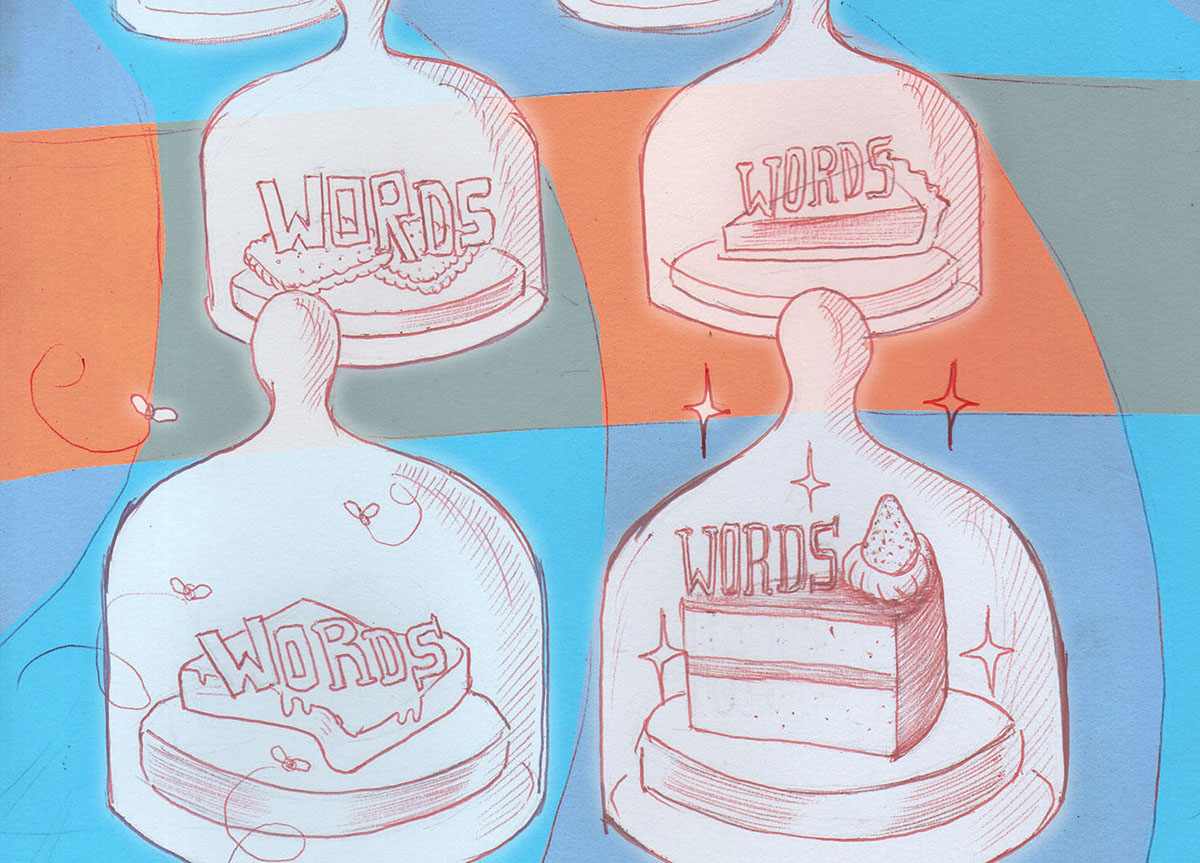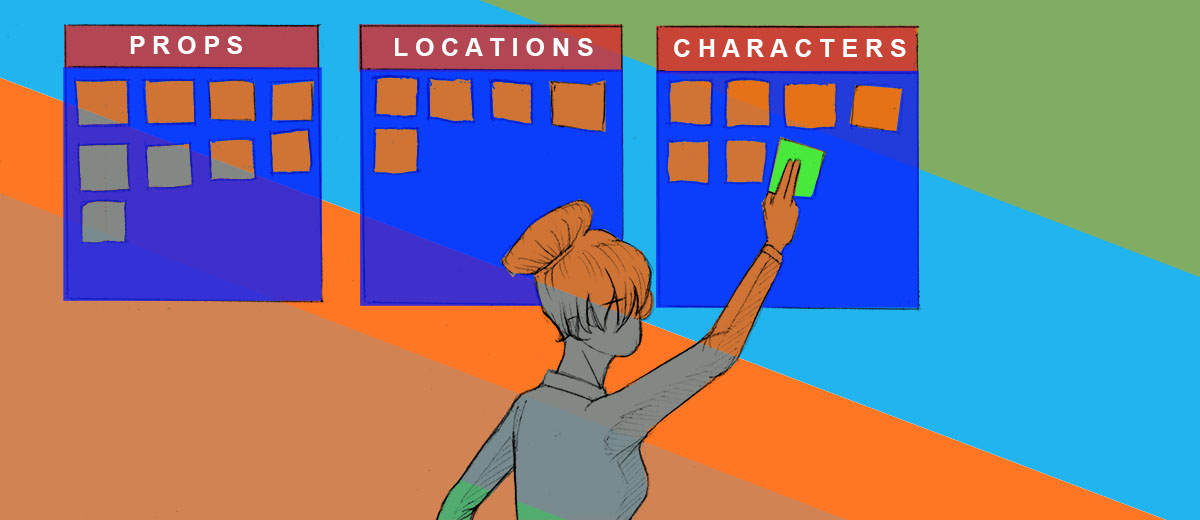
Content Marketing 2020: You Could Be Missing the Mark (Unless You Keep This in Mind)
History repeats itself, and so does the Internet.
If you’ve been paying attention to the latest trends in content marketing, you may have already noticed their circular, spiraling nature…
If not – we did the work on your behalf, and this article will showcase our best findings.
The following information will bring you up to speed on the online content writing best practices for 2020 and beyond.
We’re going to help you set your aim clearly into the future.
This is a 2-part feature: here, we’ll focus only on laying out the theory; in the next article (cue link), we’ll detail practical considerations on how to style your content according to the latest trends.
All this information is free, with no strings attached.
(Although you’ll likely want to follow us when you realize how substantial and thorough our editorial vision is.
Did we mention the free 7-week Writer’s Block Course that we offer exclusively as welcome to all newsletter subscribers?)
We took great care to ensure that reading this will be well worth your time, and you’ll find this article embodies the same principles it promotes.
Before reading this article, you may want to consider the following questions:
- Are you in any way involved in content marketing?
- Do you want people to actually read what you write?
- Would you like to learn the latest tricks of the trade?
Then make sure to keep the following principles firmly in mind, and you’ll instantly place yourself ahead of the pack.
This is no exaggeration either – it’s just a sign of how distracted most people are, these days.
Let’s not, however, confuse distraction with ineptitude…
Your readers are getting much smarter than you give them credit for
Have you been around the world wide web for a while? Have you been paying attention to the dominant communication tactics? Then you may have noticed an interesting pattern…
Manipulation is falling out of style.
Well, at least the kind of cheeky manipulation that assumes most Internet readers are not too bright.
Not a decade ago, the online realms were teeming with “get right quick” schemes, charitable Nigerian princes, and all kinds of ludicrous “1,000,000th visitor prizes” meant to part the unwise from their money.
Nowadays, scams of every flavor still abound – as they likely always will, since it comes with the human territory.
However…Internet users are now increasingly savvy, more experienced, markedly alert, and always looking to decipher the real intent behind the content they read… just like you are, isn’t that right?
Website visitors are more critical, more demanding, and have higher expectations… coupled with narrower attention spans and less time to waste.
While there is no shortage of sleazy and deceitful content catering to those at the lower end of the digital literacy spectrum… we need to start thinking of such content as the lowest common denominator, rather than the norm.
Mainstream Internet users are smarter than ever…
…and more resistant to emotional manipulation.
It could be argued the Internet has somewhat matured, and as more people become familiar with this massive communication tool, the prevailing narratives and attitudes are shifting and evolving.
Since we modern writers of the digital age want our writing to be read, we need to look ahead and align our present efforts with what is likely to be tomorrow’s trends.
We need to keep in mind we’re communicating with readers who have been around the world wide web for a while.
At this point, a significant proportion of Internet users has a whole lifetime of experience using this tool, and they’ve seen it all.
We’re talking to you, Millennials of the world:
You have already become adults, and you’re about to become the mainstream.
Modern expectations for online content have changed, and modern content writers must follow suit if they want to succeed within the fledgling new dynamics of the attention economy.
So how do we start writing content that has a good chance of being read?
- We need to structure our ideas carefully. We need to think deeply about the topics we want to discuss and make compelling presentations that will leave our competitors gritting their teeth.
- We need to keep looking at what everyone else is doing and find ways to do it better. Most importantly, we need to start learning how to present our information in a way that is appealing, engaging and pleasant to read.
- We need to be mindful of both form and essence if we want our messages to be heard in this virtual echo chamber that keeps getting louder and messier.
- We need to be clear, concise and compelling, and learn to captivate the attention of our readers and make them interested in the topics we want to bring forth.
These are familiar principles to anyone with copy-writing experience, whether old-school or digital.
However, principles that were once reserved for sales pages are now seeping into evergreen informational content.
That’s simply because the line between copy-writing and plain content writing is getting blurred.
This is apparent when you notice that many popular websites are starting to style their text in a similar format to sales pages of old.
Very much like we’re doing here.
This approach now makes good sense, since the attention of readers is a commodity they treasure deeply.
For many of your readers, time is more valuable than money.
Nowadays, it can be just as hard to get visitors to pay attention to your ideas as it’s hard to make them want to pay money for your products.
As such, it’s only natural that techniques that once were used to sell are now also being used to keep readers engaged.
We can no longer afford to waste the time of readers, and we especially can’t afford to defraud their expectations.
We’re all battling to draw eyes to our content and keep them going down the page.
This is what writing is now all about.
It’s now crucial to both produce stellar writing as well as make an alluring delivery; you need both style and content to succeed.
If we want our content to be read, we need to be able to convince readers that we have the answers they seek.
And we need to make sure we deliver precisely what we promise.
If you want your readers to keep coming back to your website and keep reading and sharing your content, you need to earn their trust, keep it and treasure it thoroughly.
Deceptiveness of any kind is now very unlikely to produce sustainable results over the long term.
Even Google itself now places extreme importance in two key signals from a webpage, in order to determine its worthiness.
Those key signals are: “Time Spent on Page” and “Pages per Visit”.
The death of clickbaits and why you need to deliver the goods ASAP
As far as Internet eras go… we are now arguably coming out of the age of the clickbait.
What was once a highly effective technique is now stale and outright harmful.
Clickbaits are manipulative headlines that teased readers into clicking a website link, for the sake of generating page views that would translate into advertising revenues.
Clickbaits are the digital version of the infamous bait-and-switch of traditional marketing.
The problem with a clickbait is how this approach typically regarded readers as a means to an end.
In the last few years, such trickery has actually been very effective… but now it’s more likely to spark up resentment and push away readers – along with search engines.
You cannot any longer hope to have a sustainably successful website if you center your efforts around tricking visitors.
Doing so will turn away both organic traffic as well as search engine traffic.
You now have to shift your focus in the exact opposite direction: focus on earning the trust of readers.
- This doesn’t mean you shouldn’t take the time to write compelling headlines.
- It doesn’t mean that you shouldn’t be seductive in your approach to writing.
- It simply means that you now have to be very careful to deliver on your promises.
The latest guidelines for effective web writing call upon us to actually deliver the goods first and foremost, rather than stringing readers along with hopes of eventually providing the answers they want.
It’s now all about opening your pages with straightforward and succinct answers that give readers a sense they’ll find it worth to spend time reading through your content.
It’s now about promptly providing context and briefly persuading the reader they will enjoy taking the time to read through the meticulously structured, extensive sections that follow.
It’s now about putting much thought in the opening sections of your articles and use them as an opportunity to sell readers on reading through.
You cannot ever assume your reader will waste more than 10 seconds of his time reading your content.
It won’t take that long for the average reader to flee, once you stop holding their attention and piquing their interest, all the while sparking their emotions.
However, you also have to make sure their attention is put to good use when all is said and done – otherwise, they won’t be happy; and if they won’t be happy, they will unlikely be back.
By the end of each and every article you write, you must mindfully make sure to deliver on all expectations you initially piqued – it’s absolutely critical doing so!
Waste nobody’s time;
Rile everyone up:
Defraud no expectations!
This philosophy has been officially endorsed by search engine king itself, through the advent of Google Snippets – also known as answer boxes.
In case you’re not familiar with the concept, it involves structuring your content so precisely that Google will be able to retrieve information and use it as part of search results.
The more effectively you structure your website articles, the more thoroughly the Google algorithm will be able to parse through the content and understand its meaning, as well as presenting relevant sections of your text directly in search queries – this a truly valuable opportunity to draw attention to your writing.
Structure and style combined will help funnel interested readers directly into your content, where you will get your chance to engage their attention.
Why you now need to write each paragraph as though it were a Tweet
The reason why Twitter became such a massive social media website was that its creators understood we live in an increasingly fast-paced society where people have little time or patience to waste.
Twitter’s distinctive feature was as plain as brilliant: it forced people to communicate in 140 characters or less.
In a deceptively simple way, this communication tool was groundbreaking; it forced users to cultivate brevity and clarity, and people loved it.
The creators of Twitter were visionary because they realized the direction our patterns of content consumption were headed. This direction hasn’t changed in the meanwhile – if anything, the acceleration has increased.
The same principles that made Twitter popular will now help make your content popular, for very much the same reasons.
It all boils down to people not having much free time at all… along with having increasingly more content vying for their attention.
Reading has evolved, and it’s up for writers to adapt.
Not many decades ago, your average avid readers actually had to put effort to find new interesting material. They would roam around libraries and book clubs and book shops, ever on the literary prowl.
Today, even the most voracious reader in the world will simply not be able to keep up with their ever-expanding reading list. If you like books, the Internet will have a way of producing recommendations you will like and bring them to your attention.
As readers, we seldom have to hunt for interesting new material; it now feels as if there is always interesting new material competing for our attention.
As writers, the exact opposite is true: long gone are the days when it sufficed to write appealing content.
Today, the real challenge is competing for the attention of readers.
When it comes to reading, the offer has steadily outpaced the demand. It’s not even a fair fight anymore: literary demand is absolutely dwarfed by the literary offer, at this point.
And that’s not to say the demand has decreased… for people are reading more than ever, nowadays!
Some older souls may argue “but most kids are just reading gibberish content in their phones”, but that is simply a modern reiteration of the age-old debate on literature vs escapism.
While Twitter has since evolved to allow slightly larger texts, and despite the fact many of its users now make it a habit of chaining together Tweets into long-form messages, its spirit of brevity remains as relevant as ever.
It’s worth noting, however, that brevity isn’t just a matter of expression – but also of articulation.
In other words… brevity involves crafting compelling content, as well as making sure its presentation is very digestible.
Staring at long walls of text is very much out of style, but here’s a simple workaround
Though brevity is absolutely crucial in this time of rampant noise, brevity can get stale fast because it lacks warmth.
When people turn to a piece of text, they won’t be happy to read telegraphic writing only. It will come across as a half-hearted outline, not meant for human consumption.
While it’s exactly the telegraphic writing that stands a good chance of attracting the attention of readers, in the first place. But ultimately, it’s the prose that makes them linger around.
So how can we go about getting the best of both worlds?
How can we use brevity to our advantage without allowing our writing to become too blunt and excessively curt?
Easy – we meticulously break apart all content to make it more scannable and create multiple entry points that will snatch eyes at a glance, and funnel the reader’s attention into the text.
There’s now an unwritten rule where it concerns online content writing – never a paragraph with more than three lines.
Some may be more drastic about it and say “never more than two lines per paragraph!!”, or even “single-line paragraphs only!!!” – at which point there’s a danger of over-doing it.
If you break your content apart too much, it will get to a point of diminishing returns and cross over into outright redundancy.
You’ll find it can be so much more effective to have a good sense of rhythm in how your sentences and paragraphs flow into one another.
A simple way to evaluate the visual rhythm of an article is to pay attention to the white space created by paragraph breaks.
In fact, you may want to avoid looking for formulas and instead focus on what feels right, along with what seems to work to better convey your intended message.
Tomorrow’s best content will not be unlike yesterday’s best sales pages
This suggestion may sound preposterous to avid readers who very much like perusing through endless text streams…
Likewise, many could regard this as a call to dress up articles while aiming to hide their conceptual flaws.
Yet other readers may feel we’re inviting people to devalue their writing by adding unnecessarily flourish.
These hypothetical assertions, while reasonable, are also ultimately superficial.
This isn’t about using frills as a way to compensate for having a lack of ideas, nor to disguise the lack of substance of the text.
In fact, it’s very much the opposite:
- It’s about drawing from the best of both worlds; about creating content with style.
- It’s about treasuring the time and attention of readers, and never taking it for granted.
- It’s about putting as much care and dedication into presenting your text as do in creating it.
Once upon a time, information was a commodity.
Now, it’s as widespread as the air we breathe. The age of information is here, and the competition for the attention of readers is fiercer than ever.
If you want to stand out from the crowd, you have to be able to create content that’s both interesting and appealing. So far, we have covered the theoretical aspects.
This covers the theory of cutting edge content writing.
Read the next article to see some practical considerations on how to effectively style your content.



